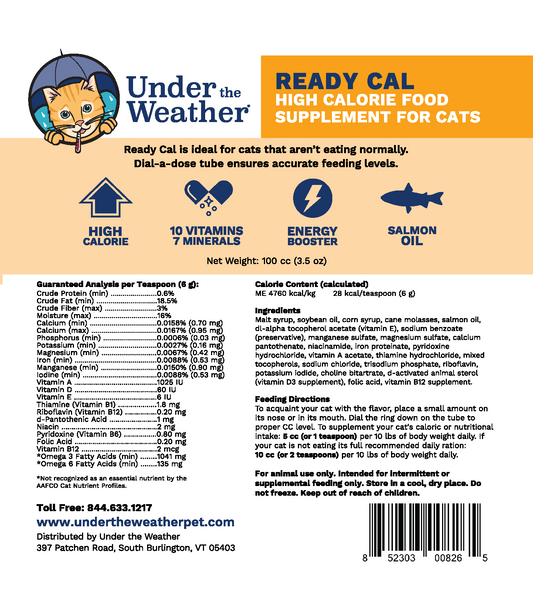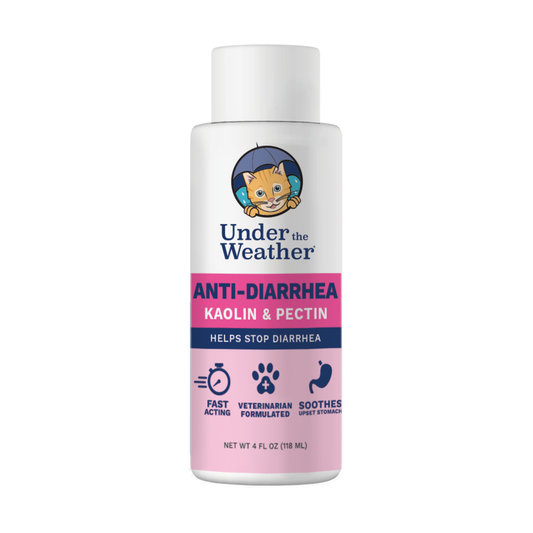In recent years, there has been an increased awareness of intervertebral disc disease (IVDD) in cats. This condition, which affects the spinal discs, can cause significant discomfort and mobility issues for our feline friends. To ensure the well-being of our cats, it is crucial to understand the symptoms and care associated with IVDD. In this article, we will explore what IVDD is, how to identify its symptoms, the importance of early detection, treatment options, and how to provide proper care for a cat with IVDD.
What Is IVDD in Cats?
IVDD, or intervertebral disc disease, is a degenerative condition that primarily affects the spinal discs in cats. These discs, located between the vertebral bones, serve as cushions, allowing for flexibility and shock absorption. With IVDD, these discs deteriorate over time, causing pain and potential nerve damage.
The Science Behind IVDD
The exact cause of IVDD in cats is not entirely understood. However, it is believed that genetics, age, and certain lifestyle factors can contribute to its development. Over time, the spinal discs lose their water content and become less resilient. This can lead to herniation, where the nucleus of the disc protrudes outward and compresses nearby nerves, resulting in pain and discomfort.
Furthermore, recent studies have suggested a potential link between obesity and IVDD in cats. Excess weight can put added pressure on the spinal discs, accelerating their degeneration and increasing the likelihood of disc herniation. Maintaining a healthy weight through proper diet and exercise may help reduce the risk of IVDD in feline companions.
Prevalence of IVDD in Cats
While IVDD is more commonly associated with dogs, it can also occur in cats, albeit less frequently. Certain cat breeds, such as the Maine Coon and the Siamese, are believed to be more susceptible to this condition. Additionally, older cats may be at a higher risk of developing IVDD due to age-related degeneration.
It is important for cat owners to be aware of the signs of IVDD, which can include reluctance to move, hunching of the back, and sensitivity to touch along the spine. Early detection and intervention are key in managing IVDD and improving the quality of life for affected felines. Regular veterinary check-ups and monitoring of your cat's mobility and behavior can help catch this condition in its early stages.
Identifying Symptoms of IVDD in Cats
Recognizing the symptoms of Intervertebral Disc Disease (IVDD) in cats is crucial in providing timely care and treatment. IVDD is a condition that affects the spinal discs, causing pain and mobility issues in felines. Cats may not always show obvious signs of discomfort, so it's essential to be vigilant and observant of any changes in behavior or physical signs that may indicate a potential problem.
When it comes to IVDD, early detection is key to preventing further damage to the spine and ensuring the best possible outcome for your cat's health and well-being. Understanding the signs and symptoms of IVDD can help you intervene promptly and seek appropriate veterinary care.
Physical Signs to Look Out For
- limping or difficulty walking
- stiffness or reluctance to jump
- weakness in the hind legs
- loss of bladder or bowel control
- arching of the back
These physical signs may vary in severity depending on the stage of IVDD and the specific location of the affected disc in the spine. It's important to note any changes in your cat's mobility and seek professional guidance if you notice persistent issues.
Behavioral Changes in Your Cat
In addition to physical signs, behavioral changes can also indicate the presence of IVDD in cats. Keep an eye out for
- increased irritability or aggression
- withdrawal or hiding
- loss of appetite
- vocalization when touched or picked up
Changes in behavior such as increased vocalization or hiding may be your cat's way of expressing discomfort or pain. Understanding your cat's normal behavior patterns can help you identify deviations that may signal underlying health issues like IVDD.
The Importance of Early Detection
Early detection is crucial in managing and treating Intervertebral Disc Disease (IVDD) in cats. IVDD is a condition that affects the spinal discs, leading to pain, nerve damage, and potential paralysis. The sooner the condition is diagnosed, the better the prognosis and treatment outcomes for the affected feline.
One of the key reasons why early detection is vital in cases of IVDD is the potential to prevent irreversible damage. When IVDD is caught in its early stages, interventions can be implemented to slow down the progression of the disease and alleviate symptoms. This can significantly improve the quality of life for the cat and increase the chances of a successful recovery.
How Early Detection Affects Prognosis
Early detection of IVDD not only allows for timely intervention but also opens up more conservative treatment options. These options may include medication, physical therapy, and lifestyle modifications that can help manage the condition without the need for invasive procedures. By addressing IVDD early on, pet owners can potentially avoid the risks and costs associated with advanced surgical interventions.
Furthermore, early detection of IVDD enables veterinarians to tailor treatment plans to the specific needs of the cat. This personalized approach can lead to better outcomes and a more targeted management strategy for the individual feline patient.
Regular Vet Check-ups and IVDD
Scheduling regular veterinary check-ups for your cat is instrumental in identifying any potential issues, including IVDD. During these visits, your veterinarian can assess your cat's mobility, perform neurological exams, and recommend further diagnostic tests if necessary. These proactive measures can help catch IVDD in its early stages, allowing for prompt intervention and improved long-term prognosis for your beloved pet.
Additionally, regular vet check-ups provide an opportunity for pet owners to discuss any changes in their cat's behavior or mobility. By being vigilant and proactive in monitoring your cat's health, you can work together with your veterinarian to detect and address any emerging issues, such as IVDD, at the earliest possible stage.
Treatment Options for IVDD in Cats
When it comes to treating Intervertebral Disc Disease (IVDD) in cats, it is crucial to consider the various options available, tailored to the severity and specific needs of the feline patient. IVDD is a condition that affects the spinal discs, leading to pain, mobility issues, and in severe cases, neurological deficits.
Understanding the treatment landscape for IVDD in cats involves a comprehensive approach that encompasses both non-surgical and surgical interventions. Each cat's response to treatment can vary, highlighting the importance of individualized care and close monitoring by a veterinary professional.
Non-Surgical Treatments
Non-surgical treatments play a vital role in managing IVDD in cats, particularly in cases of mild to moderate severity. These treatment modalities may include pain management medication, anti-inflammatory drugs, physical therapy, and restricted activity. By combining these approaches, veterinarians aim to alleviate discomfort, reduce inflammation, and enhance the cat's overall quality of life.
Additionally, non-surgical options such as acupuncture and chiropractic care have shown promise in some cases of IVDD, providing complementary therapies that focus on pain relief and improved mobility.
Surgical Treatments
For cats with severe IVDD that do not respond adequately to conservative treatments, surgical intervention may be necessary. Surgical options for IVDD in cats may involve procedures such as hemilaminectomy, ventral slot, or spinal fusion, depending on the location and extent of the disc herniation. These surgeries aim to alleviate spinal cord compression, restore neurological function, and prevent further damage to the affected area.
Cat owners need to work closely with their veterinarian to determine the most suitable treatment plan for their feline companion, considering factors such as the cat's age, overall health status, and the presence of any concurrent medical conditions. By addressing IVDD proactively and implementing a comprehensive treatment strategy, cat owners can help improve their pet's comfort and long-term prognosis.
Caring for a Cat with IVDD
Providing care for a cat with Intervertebral Disc Disease (IVDD) involves a combination of home care and long-term management strategies. IVDD is a condition that affects the spinal discs of cats, leading to pain, mobility issues, and potential paralysis. With proper care and attention, cats with IVDD can lead fulfilling lives.
When caring for a cat with IVDD, it's crucial to create a safe and comfortable environment that supports their specific needs. Cats with IVDD may experience sensitivity in their spine, so providing a soft and supportive bed or resting area is essential. Additionally, it's important to avoid situations that may cause excessive jumping or climbing, as these activities can put strain on the spine and worsen the condition.
Home Care Tips
At home, consider the following care tips for your cat with IVDD:
- Provide a comfortable and supportive bed or resting area.
- Avoid situations that may cause excessive jumping or climbing.
- Implement a low-impact exercise routine, if recommended by your veterinarian.
- Administer medications as prescribed and monitor for any side effects.
It's also important to work closely with your veterinarian to develop a comprehensive home care plan that addresses your cat's individual needs and helps manage their IVDD symptoms effectively.

Long-Term Management of IVDD
Managing IVDD in cats requires ongoing monitoring and adjustments to ensure your cat's well-being. Regular veterinary check-ups, adherence to medication protocols, and open communication with your veterinarian are essential components of long-term IVDD management. Your veterinarian may recommend physical therapy, dietary adjustments, or other interventions to help improve your cat's quality of life.
By staying proactive and attentive to your cat's needs, you can help them navigate life with IVDD and provide the necessary support for a comfortable and happy existence.












